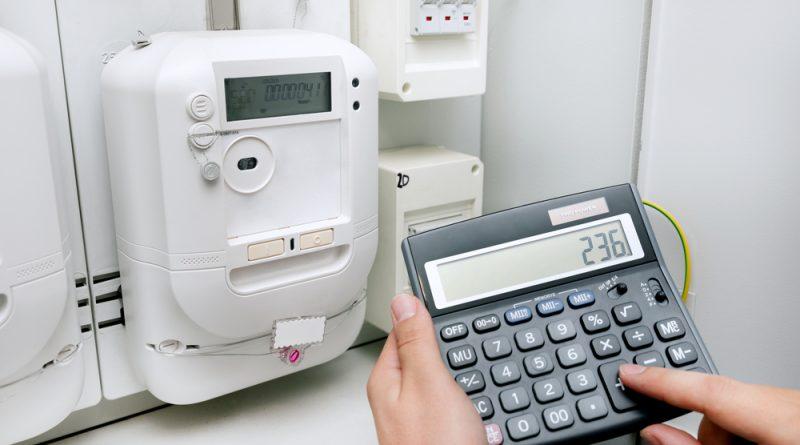Electricity Tariff Increase: How To Calculate Your Electricity Bill and Save Money
It is common knowledge that electricity consumers in Nigeria, including residents and businesses, will now have to pay more for each unit of electricity consumed. Recently, the Federal Government yielded to pressure and increased the tariff rate for Band A consumers from N66 per kilowatt hour to N225. While the rates for other bands remain unchanged, it is likely that they will be adjusted in the near future.
To prepare for the higher electricity costs and avoid excessive bills, it is essential to plan ahead for your monthly consumption. One effective way to do this is by carefully reviewing your bill each month to identify opportunities for savings and reduce your overall usage.
Understanding how your electricity bill is calculated is crucial in finding ways to cut costs. Here are three methods to help you calculate your bill:
- Utilize an online estimation calculator
- Calculate your monthly bill manually
- Use a monitoring device
By implementing these strategies and following our tips, you can effectively reduce your electricity expenses.
1. Use an online electricity bill estimation calculator
To obtain a precise estimate of your electricity bill, it is recommended to utilize an online calculator. These calculators, although not as accurate as those that allow for more detailed data input, can provide a rough estimate based on the appliances in your home. However, for a more precise estimation, we suggest using individual appliance energy calculators and summing up the costs. These calculators enable you to input specific details such as the size of your appliance and its monthly usage frequency. While this method may require additional time and some basic calculations, it remains the simplest approach to accurately determine your monthly electricity consumption. If you’re looking for online electricity cost calculators, you can consider using
Additionally, to assist you in determining the wattage of various appliances, here is a table from Ikeja Electric.
| APPLIANCE | TYPE | APPLIANCES POWER RATING (WATT) | APPLIANCES RATED CURRENT | KW CONSUMED IN ONE HOUR | NUMBER OF HRS TO CONSUME 1 UNIT (1KWH) OF ELECTRICITY | BAND A TARIFF CUSTOMERS AT N225 PER KWH COST PER HOUR OF USE (I/E COLUMN 5*N225) |
| (Watts) | (Amperes) | (Hours) | COST OF CONSUMPTION IN 1 HOUR (N : K) | |||
| Pressing Iron | Dry Iron | 1200 | 5.22 | 1.2 | 0.83 | 270 |
| Pressing Iron | Steam Iron | 2000 | 8.7 | 2 | 0.5 | 450 |
| Toaster | Small | 750 | 3.26 | 0.75 | 1.33 | 168.75 |
| Toaster | Medium | 1000 | 4.35 | 1 | 1 | 225 |
| Toaster | Large | 1400 | 6.09 | 1.4 | 0.71 | 315 |
| Kettle | Small | 1850 | 8.04 | 1.85 | 0.54 | 416.25 |
| Kettle | Medium | 2200 | 9.57 | 2.2 | 0.45 | 495 |
| Blender | Medium | 450 | 1.96 | 0.45 | 2.22 | 101.25 |
| Microwave | Medium | 900 | 3.91 | 0.9 | 1.11 | 202.5 |
| Water Dispenser | Normal (Common) | 700 | 3.04 | 0.7 | 1.43 | 157.5 |
| Water Heater | 50 litre | 1500 | 6.52 | 1.5 | 0.67 | 337.5 |
| Water Heater | 100 litre | 3000 | 13.04 | 3 | 0.33 | 675 |
| Cooker | 1 Plate | 1500 | 6.52 | 1.5 | 0.67 | 337.5 |
| Cooker | 2 Plate | 2500 | 10.87 | 2.5 | 0.4 | 562.5 |
| Cooker | 4 Plate | 4500 | 19.57 | 4.5 | 0.22 | 1012.5 |
| Cooker | 2 Plate + Oven | 3300 | 14.35 | 3.3 | 0.3 | 742.5 |
| Fan | Table | 40 | 0.17 | 0.04 | 25 | 9 |
| Fan | Standing | 70 | 0.3 | 0.07 | 14.29 | 15.75 |
| Fan | Ceiling | 85 | 0.37 | 0.085 | 11.76 | 19.125 |
| Refrigerator | Small | 80 | 0.35 | 0.08 | 12.5 | 18 |
| Refrigerator | Medium | 100 | 0.43 | 0.1 | 10 | 22.5 |
| Refrigerator | Large | 140 | 0.61 | 0.14 | 7.14 | 31.5 |
| Air-Conditioner | Small (1HP) | 746 | 3.24 | 0.746 | 1.34 | 167.85 |
| Air-Conditioner | Small (1.5HP) | 1119 | 4.87 | 1.119 | 0.89 | 251.775 |
| Air-Conditioner | Medium (2HP) | 1492 | 6.49 | 1.492 | 0.67 | 335.7 |
| Air-Conditioner | Large (4HP) | 2984 | 12.97 | 2.984 | 0.34 | 671.4 |
| Television | 100 | 0.43 | 0.1 | 10 | 22.5 | |
| Television | 300 | 1.3 | 0.3 | 3.33 | 67.5 | |
| Water Pump | Small (1HP) | 746 | 3.24 | 0.746 | 1.34 | 167.85 |
| Water Pump | Medium(1.5HP) | 1119 | 4.87 | 1.119 | 0.89 | 251.775 |
| Washing Machine | With spinning | 600 | 2.61 | 0.6 | 1.67 | 135 |
| Washing Machine | With spinning, dryer & OTHERS | 2100 | 9.13 | 2.1 | 0.48 | 472.5 |
| Lighting Bulb – Tungsten Filament | 60 | 0.26 | 0.06 | 16.67 | 13.5 | |
| Lighting Bulb -Energy Saving | 15 | 0.07 | 0.015 | 66.67 | 3.375 |
IMPORTANT NOTE : THE LAST COLUMN INDICATE THE COST OF ELECTRICITY THAT WILL BE CONSUMED IN 1HOUR BY EACH OF ALL THE APPLIANCES LISTED. The fundamental measurement of electricity is the Kilowatt-Hour (KWH). Put simply, 1 kwh (=1000 watt hours) represents the energy utilized by an electrical device rated at 1kw (=1000 watt, for instance, a 1000 watt electric heater) over the course of 1 hour. For instance, ten 100-watt light bulbs used for 1 hour would equal 1KWh. Therefore, if the same electrical device/s are used for 30 minutes, it would only consume half a unit. Another example would be ten 15-watt energy saving light bulbs used for 1 hour, which would only consume 0.15KWH or 15% of the current tariff rate for band A customers of N225. Consequently, if the appliance is used for 2 hours, it would consume two units.
2. Calculate your monthly electricity bill manually
The most precise and most labor-intensive approach to determining your electricity bill is by manually summing up your usage expenses. This technique necessitates familiarity with certain formulas. However, before delving into these formulas, it can be beneficial to grasp the overall concept of how you are computing the costs.
Electricity costs = (how much you use your appliances) x (how much electricity your appliance uses) x (how much electricity costs at the time you are using it)
The formulas you will need to know to manually calculate your electricity bill are:
- Watts = (amps) x (volts)
- Kilowatt-hours = (watts) x (usage) / 1000
- Cost = (kilowatt-hours) x (electricity rate)
Begin by creating a comprehensive list of all the main appliances in your home in order to manually calculate your electricity bill. Be sure to account for the appliances that consume the highest amount of electricity during this process.
alculations.
- HVAC systems
- Air-conditioner units and space heaters
- Water heaters
- Laundry machines and dryers
- Refrigerators
- TVs
- Dishwashers
- Light bulbs
- Water pumps
- Fans
- Sewing machines
- Laptops
- Computers
- Sound systems
- Micro waves
- Coffee makers
- Lighting
- Electric ovens and stoves
- Etc.
Once you compile a list of your main appliances, you must determine their wattage. Wattage indicates the amount of electricity an appliance consumes per second, and it is measured in Watts. Check the back of the appliances or refer to the manual to find the wattage. If the wattage is not listed, you will need to calculate it by multiplying the Amps by the Volts (most appliances provide this information). If you cannot find the volts or amps, you can also search online using the model of your appliance to find the wattage.
After obtaining the wattage, the next step is to assess how frequently you use each appliance daily, weekly, and monthly. Try to provide an accurate estimate, considering that usage may vary depending on the season for certain appliances like the AC. You will likely need to calculate your electricity bill separately for summer and winter.
Additionally, you should be aware of the electricity rate in your area, for instance, N225 per kilowatt hour for band A users. The final step involves inputting all the variables into the equations. For each appliance, multiply the wattage by your usage, then multiply the usage by the electricity rate in your area.
Finally, sum up the costs for all appliances. Remember to convert the wattage to kilowatts by dividing by 1000, as electricity bill costs are calculated in kilowatt hours. While manually calculating your electricity bill may be time-consuming, it is the most precise method to estimate your monthly electricity consumption.
If you aim to comprehend your electricity expenses and usage thoroughly, this approach is highly recommended. It allows you to identify which appliances consume the most electricity in your household, enabling you to explore effective ways to save energy.
An Example For You
Let’s take the example of an electric ceiling fan. According to the data provided by Ikeja Electric, the average ceiling fan consumes 85 watts of electricity and requires approximately 12 hours of operation to consume one kilowatt-hour (kWh) of electricity. In simpler terms, your ceiling fan will consume a total cost of N19.125 in one hour. If you have 5 ceiling fans installed in your house, they will collectively consume about N96 worth of electricity in one hour. If they run for 12 hours in a day, you will incur a total cost of N1,147.50 for that day. This means that while the electricity distribution company (DISCO) profits, your pocket will be drained.
You can apply this calculation to other appliances in your house as well. However, what if the kWh consumption of your appliance is not listed in the table provided by Ikeja Electric? In such cases, you can use the formula mentioned earlier to calculate it.
Electricity costs = (how much you use your appliances) x (how much electricity your appliance uses) x (how much electricity costs at the time you are using it)
The formulas you will need to know to manually calculate your electricity bill are:
- Watts = (amps) x (volts)
- Kilowatt-hours = (watts) x (usage) / 1000
- Cost = (kilowatt-hours) x (electricity rate)
In this instance, let us assume that the appliance in question is a Yamaha Electronic Music keyboard. Secondly, let us assume that upon checking the rear of the keyboard you find that the wattage is 150 watts. Here is the computation assuming that you use it 3 hours on the average per day
- Wattage = 150 watts
- Kilowatt hour computation = average use per meeting day = 3 hours
- 150 watts multiplied by the number of hours of use per day and then divided by 1000 = 0.3 kilowatt hours = 0.45KWH. (Alternatively, the KW per hour will be 150 watts multiplied by one hour and then divided by 1000 = 0.15 kilowatt hours = 0.15KWH
- Cost per kilowatt for Band A is N225 per kilowatt
- Cost per kilowatt hour then will be 0.15XN225 = N33.75 per hour of use of the keyboard
- For three hours of use it will be 3xN33.75 = N101.25 cost
- If you have say, five of such keyboards and they all are in use for average of three hours per day, then the cost of electricity usage per day for the five of them will be N101.25×5 = N506.25
- For a week’s usage, the cost will be N506.25×7 = N3,543.75
- For a month’s usage the cost of electricity will be N506.25×30 = N15,187.50
Electricity monitoring devices provide an accurate measurement of your electricity consumption with minimal effort. However, this convenience comes at a price. The most advanced electricity monitoring devices can be quite expensive, but in the long run, they can help you save money by identifying energy-consuming appliances and allowing you to limit their usage. Additionally, these devices can save you a significant amount of time by providing real-time information and data about your electricity usage directly to your smartphone.
If you are willing to bear the initial cost, investing in an electricity monitor can be beneficial as it enables you to gain insights into your electricity habits and take control of your usage.
Here are some tips to help you reduce your electricity costs.
Calculating your electricity bill is advantageous for various reasons. For instance, if you are planning to rent an apartment, knowing the expected electricity costs will allow you to create a comprehensive budget. Understanding your electricity bill also helps you identify areas where you can save money and reduce overall electricity consumption. By determining which appliances consume the most energy, you can develop a plan to limit their usage. Additionally, there are numerous low-effort energy efficiency home improvements that can significantly contribute to lowering your bill.




